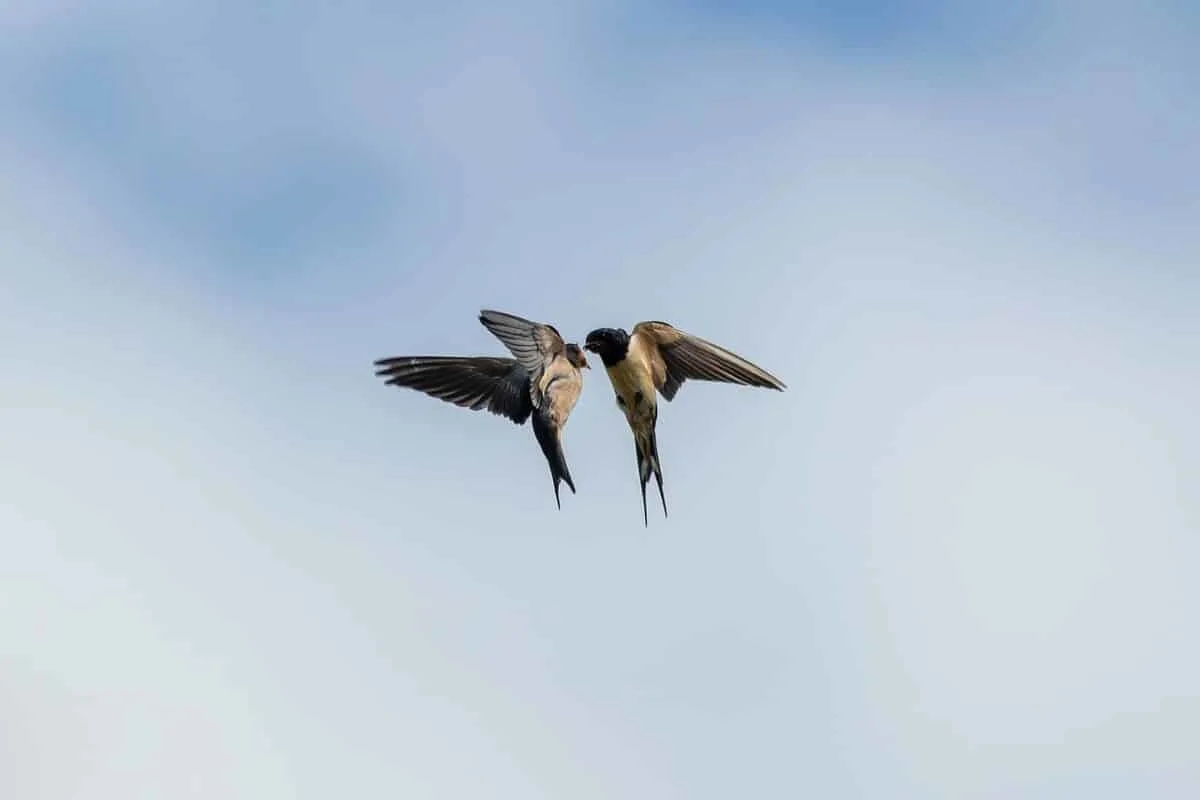In this post we’re going to meet two impressive avians and examine their impressive talents that allow the swallow to evade the notorious bird of prey, the peregrine falcon (at least in most some cases.)
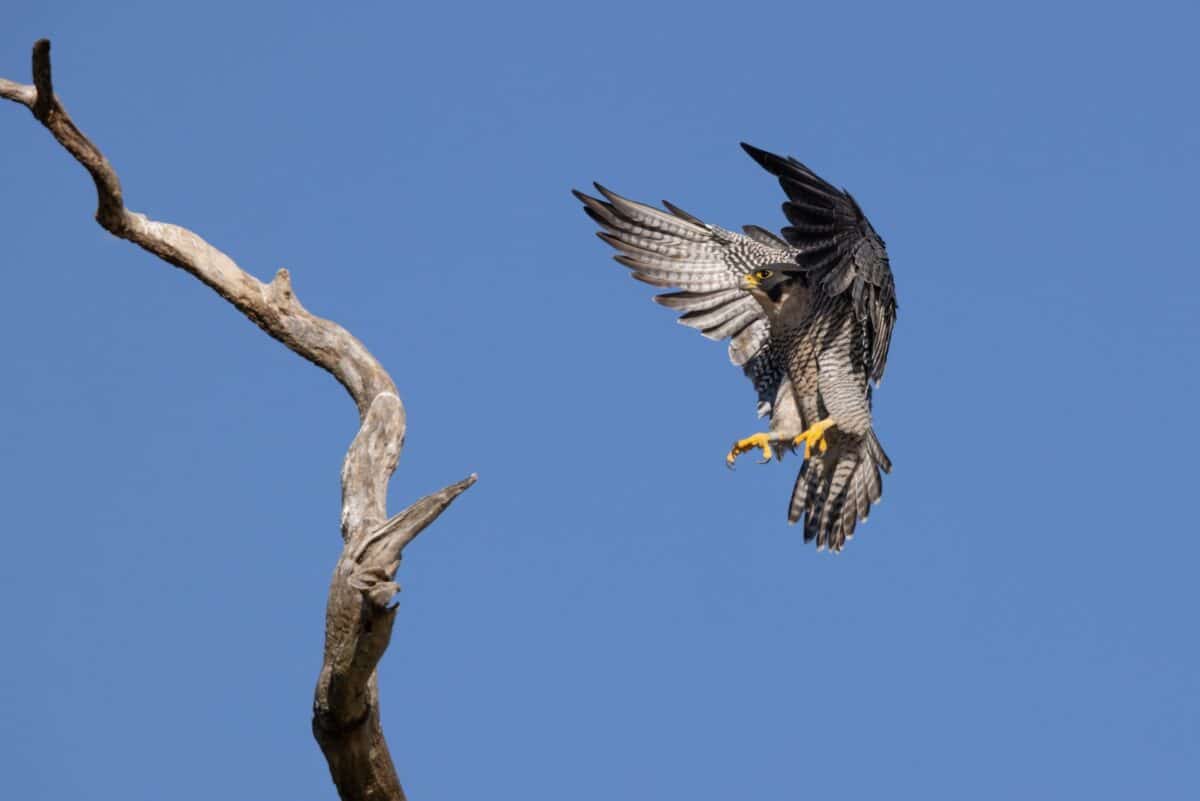
Embark on an exhilarating journey into the world of aerial combats – this one is between a swallow and a peregrine falcon. Uncover the intriguing characteristics, hunting strategies, and impressive evasive maneuvers the swallow employs to escape the lightning-fast assaults launched by the peregrine falcon (the world’s fastest bird!)
This exploration reveals the critical importance of understanding these interactions and their implications for wildlife conservation and future research endeavors.
Key Points
- Peregrine Falcons are an incredible bird of prey that holds an important role in the food chain.
- Swallows are migratory birds, and their feeding habits change depending on the time of year and food availability.
- Peregrine Falcons use a variety of hunting strategies to catch their prey, including the stoop, an aerial dive that can reach speeds of over 200 mph.
- The Swallow’s evasive maneuvers are equally impressive – it employs a range of evasive maneuvers to escape the Peregrine Falcon’s attack (some species can even use a chemical defense mechanism.)
Comparison Table
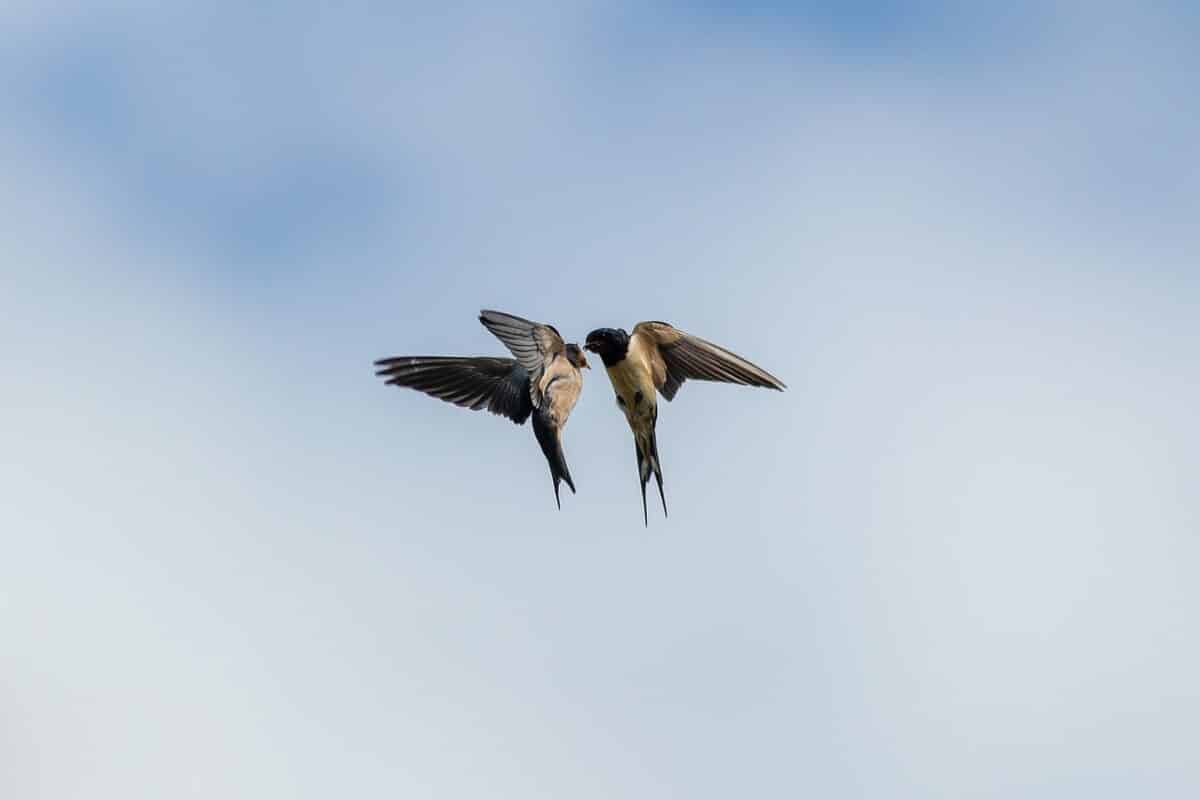
| Peregrine Falcon | Swallow | |
|---|---|---|
| Characteristics | Fast-flying and strong, distinctive black mustache and grey-blue feathers | Small and agile, a streamlined, aerodynamic body with narrow, pointed wings |
| Habitat | Various habitats worldwide (except Antarctica) | Open habitats, fields, wetlands |
| Feeding Habits | Preys on birds, bats, rodents, and insects | Primarily insects (flies, mosquitoes, beetles) |
| Hunting Strategies | High-speed diving attacks | Aerial hunting |
| Grab prey mid-air with talons, Hunting in pairs, distracting and kill | Snatching prey on the wing |
Introducing the Peregrine Falcon
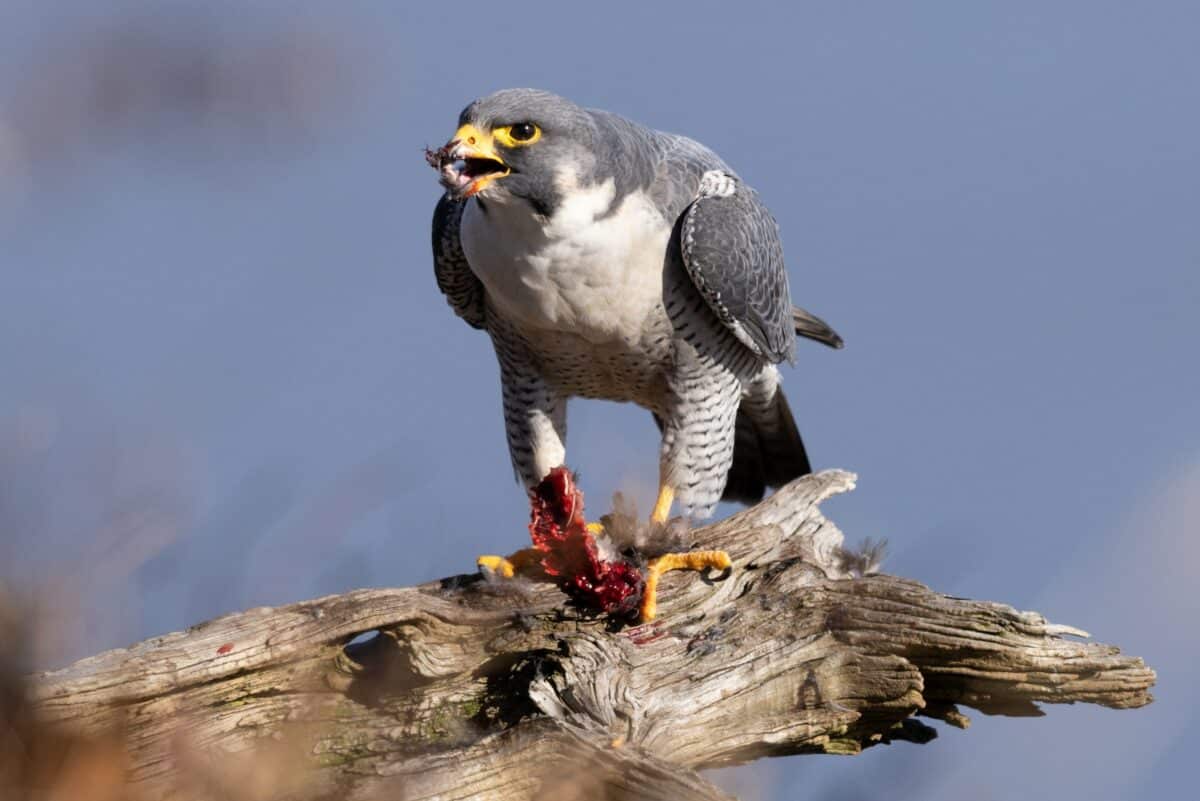
Peregrine Falcons are an incredible bird of prey that holds an important role in the food chain. Their hunting strategies and feeding habits are essential parts of their survival. Understanding these interactions and their implications allows for effective wildlife conservation and future research endeavors.
General Characteristics and Habitat
The Peregrine Falcon is a fast-flying and strong bird of prey. They have distinctive black mustache marks and gray-blue feathers on their back and wings. These predators reside in numerous habitats – they exist all over the world, except in Antarctica.
Feeding Habits and Prey
Peregrine Falcons are among the world’s most skilled hunters. They prey on other birds, such as pigeons, ducks, and doves. Their diet also includes bats, rodents, and insects. Their most well-known talent is their high-speed diving attacks, which can commonly exceed over 200 mph. This makes them the fastest bird in the world!
Hunting Strategies
Peregrine Falcons use a variety of hunting strategies to catch their prey, including the stoop, an aerial dive that can reach speeds of over 200 mph. During the hunt, they use their claws to grab their prey mid-air, and then their hooked beak kills their prey almost immediately. Interestingly, they often hunt in pairs. They team up, with one bird distracting and confusing the prey while the other goes for the kill.
Read about the fastest dive performed by a peregrine falcon here.
Introducing the Swallow
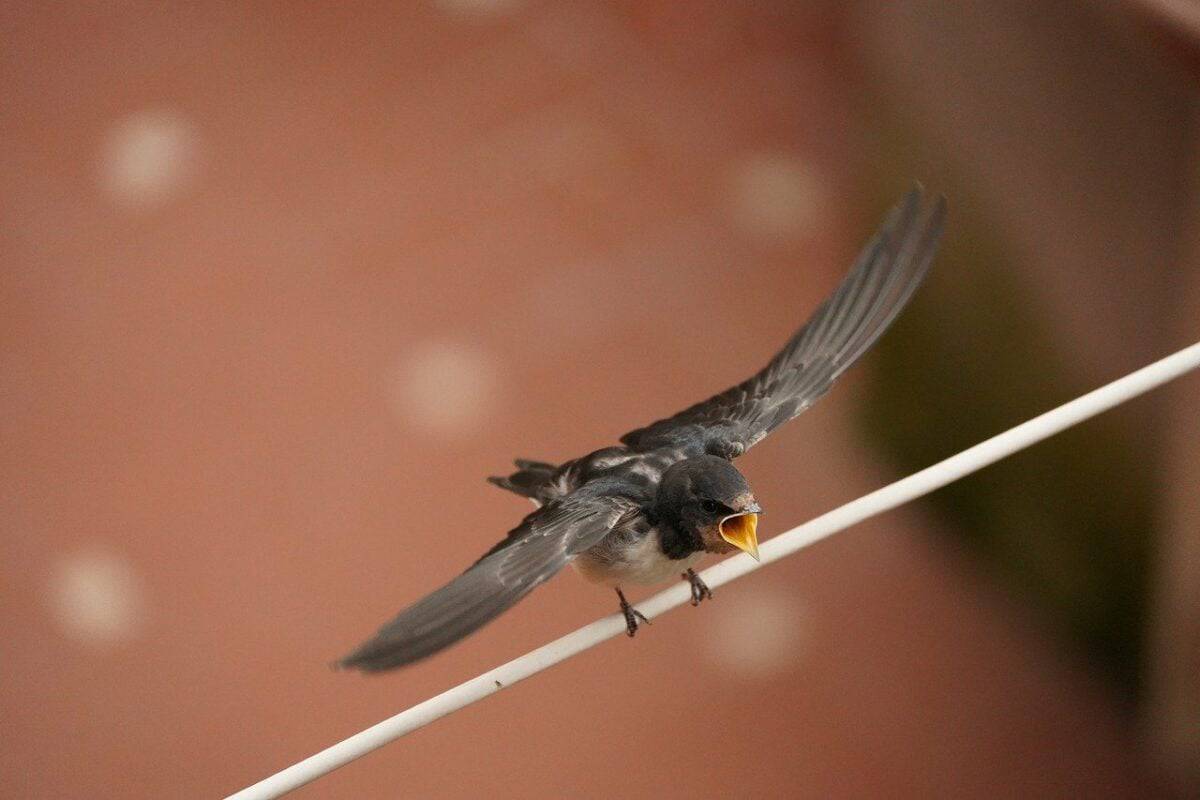
With their streamlined bodies and long, pointed wings, swallows are built for flight. They navigate the skies with grace, executing intricate aerial maneuvers that leave spectators breathless. Let’s get to know them better!
General Characteristics and Habitat
Swallows are small, agile birds belonging to the family Hirundinidae. They possess streamlined, aerodynamic bodies and narrow, pointed wings, which allow them to fly with incredible speed and maneuverability.
Furthermore, Swallows are found in open habitats, fields, meadows, and wetlands, although some species also inhabit woodlands and deserts. They are distributed worldwide, with over 80 species known to exist.
Feeding Habits and Prey
Swallows are highly skilled aerial hunters, feeding primarily on insects such as flies, mosquitoes, and beetles. They use their speed to catch prey on the wing, snatching them out of the air with their sharp beaks. As you can see, they’re not too different from the peregrine falcon.
Some species of swallows may also consume berries, fruits, and seeds to supplement their diet. Swallows are migratory birds, and their feeding habits change depending on the time of year and food availability.
Defensive Mechanisms
Swallows have several defensive mechanisms to protect themselves from predators, particularly the swift aerial assaults launched by the peregrine falcon. One of the most impressive defensive tactics is their ability to fly at high speeds in tight, erratic patterns, making it difficult for predators to catch them.
With a touch of luck, swallows can use their incredible flying skills to evade even the fastest and most ferocious birds of prey – the peregrine falcon.
They also rely on their excellent eyesight to detect approaching predators and often emit alarm calls to alert other birds to the threat.
In addition to these physical defense mechanisms, some species of swallows also use chemical defense mechanisms, producing toxic substances in their feathers and skin that deter predators and parasites.
Aerial Tussle: Peregrine Falcon Vs. Swallow
Peregrine Falcons engage in aerial combat with Swallows during migration season. When a Peregrine Falcon spots a Swallow, it quickly closes in and launches an attack. The swallow’s only chance of survival is to utilize its impressive evasive maneuvers.
This aerial tussle is an exhilarating sight, but it is also important to study these interactions for wildlife conservation and future research endeavors.
Peregrine Falcon’s Attack Technique
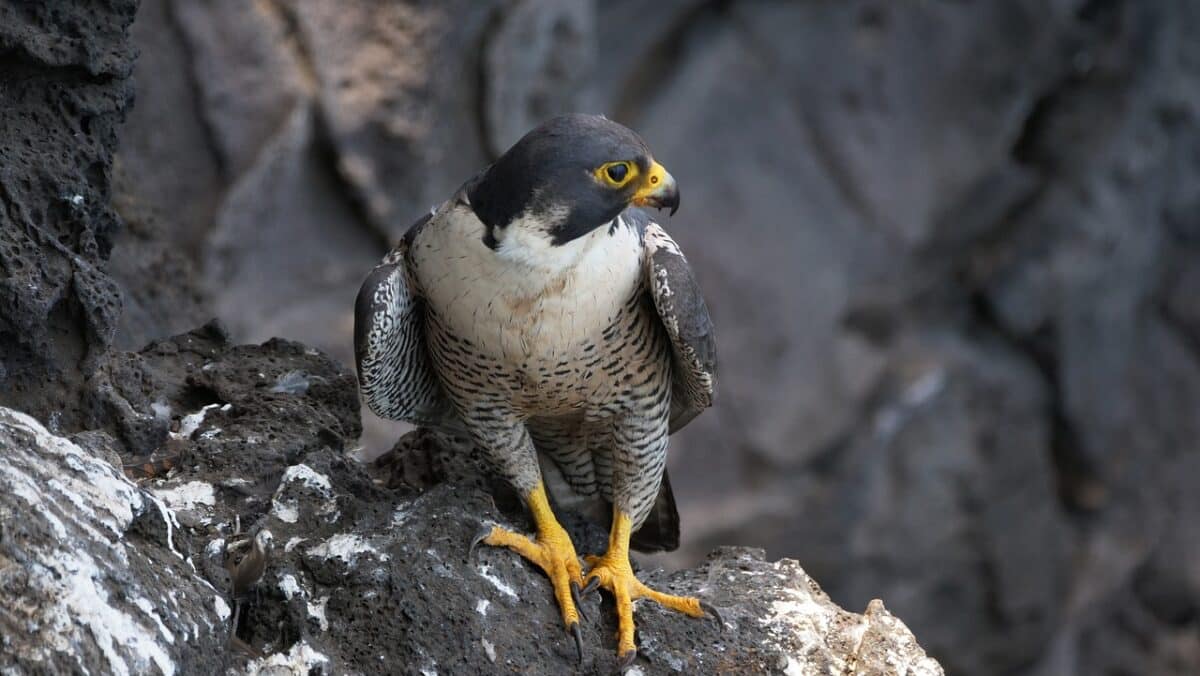
The Peregrine Falcon’s attack technique is lightning-fast and incredibly precise. Because of their high-speed dives, reaching up to 200 mph, they have received the title of one of the fastest animals on the planet. On that note, you might be interested to learn about the heaviest bird that still has the ability to fly.
When attacking a Swallow, it targets its prey with a powerful strike, using its sharp talons to grab it and bring it to the ground. This savage attack technique is brutal but necessary for the Peregrine Falcon’s survival in the wild.
Swallow’s Evasive Maneuvers
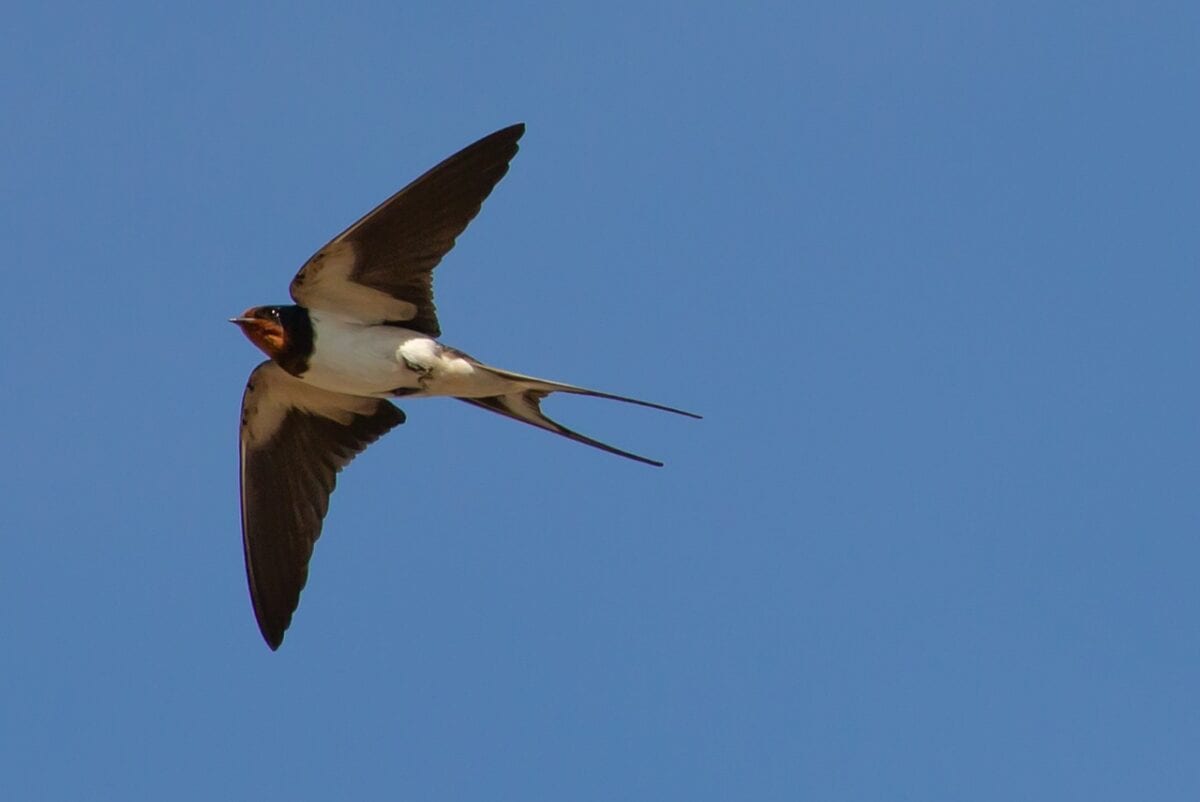
The swallow’s evasive maneuvers are equally impressive, if not more so. The swallow employs a range of evasive maneuvers to escape the Peregrine Falcon’s attack. It quickly changes direction, taking advantage of its superior agility and speed.
This bird often performs a “rolling escape,” where it rolls sideways mid-flight, making it more difficult for the Peregrine Falcon to grab hold of it. These impressive evasive maneuvers allow the swallow to evade the Peregrine Falcon (in some cases at least), a crucial part of the swallow’s survival mechanism.
The Final Verdict
In this captivating study of aerial tussles, we have delved into the enthralling encounters between Swallows and Peregrine Falcons. By examining their distinctive features, hunting tactics, and the incredible evasive maneuvers of Swallows, we have gained valuable insights into the delicate balance of survival in the avian realm.
Despite the swallow being significantly smaller than the peregrine falcon, and an ideal prey, it can evade the falcon thanks to its elusive manoeuvres (and with a little bit of luck.) That being said, the peregrine falcon’s hunting tactics are equally impressive – especially their dives during which they can reach speeds of 200 mph.
These findings underscore the significance of preserving biodiversity and inspire further investigations to deepen our understanding of these remarkable creatures and their dynamic interactions in the skies.
Thank you for reading this article! Other than lethal hunting techniques, the avian world is full of cuteness as well – read about adorable baby pigeons or everything you’ve ever wanted to know about baby ducks.
- Magpie Bird Is Reunited with Her Dog Best Friend - April 24, 2024
- Dog Saves Another Dog From Drowning in Fish Pond - April 23, 2024
- Man On Motorbike Rescues Cat From Highway - April 23, 2024

